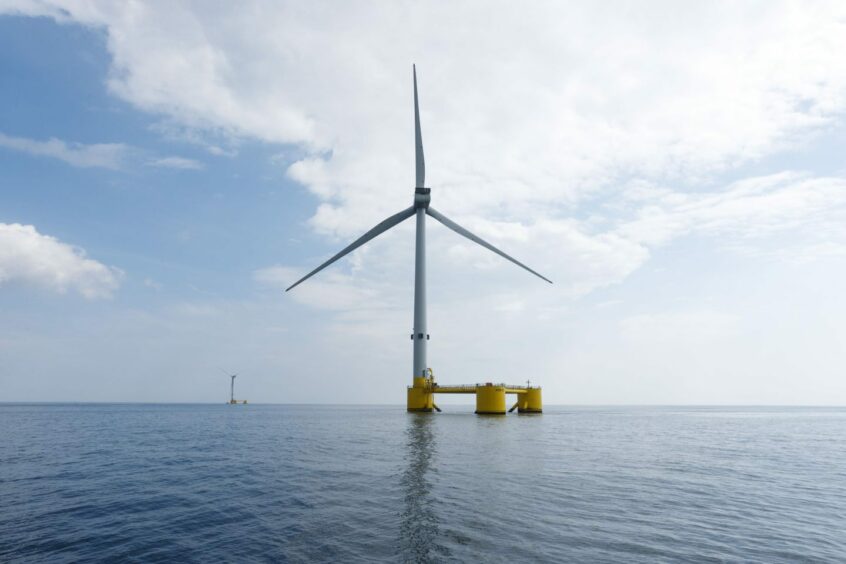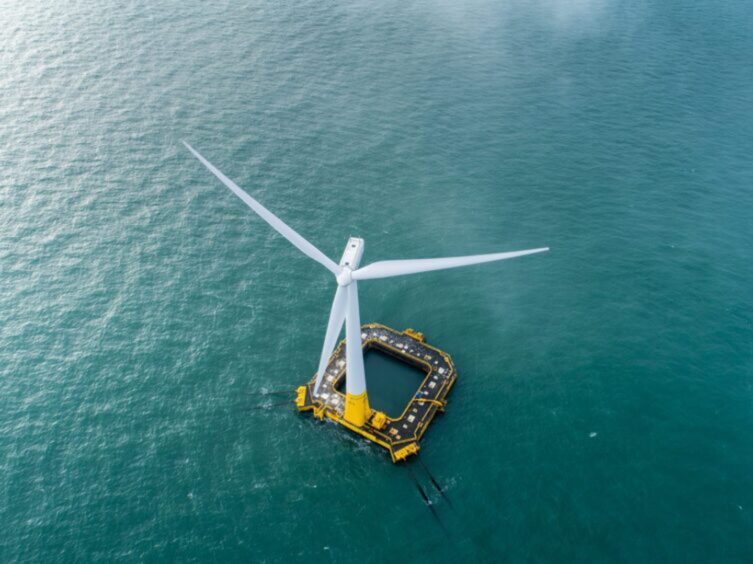
Analyst firm Westwood Global Energy Group has found that “floating offshore wind global targets will all be missed’” as it gauged industry opinion.
The firm conducted a survey on the ‘sentiments and attitudes’ in the floating offshore wind industry which revealed industry growth trajectory is expected to slow, with 54% of respondents expecting a global operational capacity of below 3GW by 2030.
Additionally, responses were inconsistent over the ‘question of optimism’, with 44% of developers globally feeling more optimistic about the trajectory of the industry compared to two years ago.
In comparison 42% of European and 30% non-European respondents felt less optimistic. The survey involved a range of 184 stakeholders.
Developing gigawatt-scale floating offshore windfarms has been identified as having “monumental” challenges, with concerns over installations, maintenance and ports being emphasised.
Supply chain issues and investment risk
Westwood’s head of energy transition, David Linden said that supply chain constraints and investment risk are key issues hitting floating offshore wind.
Mr Linden added: “But despite these known obstacles and a more realistic picture of near-term growth, optimism hasn’t wavered as much as anticipated. The enthusiasm accompanying the flurry of activity following the 2022 leasing rounds and target setting has naturally waned, but our survey results demonstrate the appetite in the sector.”
The Westwood man explained that “right now, it’s a question of pace.” for the emerging market, with international supply chains finding inconsistency in their views of an “achievable pace”.
Moreover, calls for accelerated investment, specified policy and regulatory support for technology development were made, with Mr Linden stating: “Direct investment in infrastructure and technology coupled with more focused policy are likely to be pivotal pace setters.”
Floating offshore windfarms have been promoted as a principal source of low-carbon energy, with a rapidly growing competitive market demanding increasingly complex technology.
Floating wind hurdles
The survey found that known obstacles and hurdles in the industry were defined as a lack of standardisation of floating technology (55%), manufacturing capability and capacity (51%) and port infrastructure (50%) in the survey.
Arvid Nesse, Norwegian Offshore Wind’s chief executive officer pointed out respondents to the survey remained pragmatic over the capacity for growth in the industry.
Mr Nesse emphasized: “But we need to build manufacturing capability and capacity. And we also need to invest in infrastructure and port capacities.
“To accelerate the investments in these capacities, the investors need to see a plan from the governments in the countries where floating wind is most relevant. Such a plan must indicate volumes and a timeline. ”
Finally, Mr Nesse emphasised the important role governments must play by de-risking projects “by speeding up permitting and establish financial support mechanisms.”
Westwood Global Energy Group is a specialist energy market research and consultancy firm, providing insight into technology and themes in the energy sector market.
The survey was developed in partnership with Norwegian Offshore Wind and World Forum Offshore Wind, a non-profit emergency response organization and a business platform and network for the offshore wind industry respectively.
Recommended for you

 © Supplied by BW Ideol
© Supplied by BW Ideol